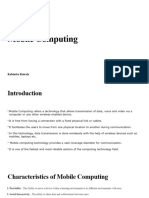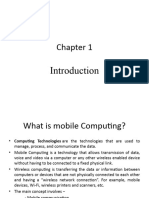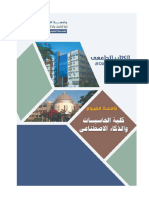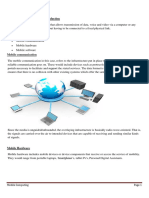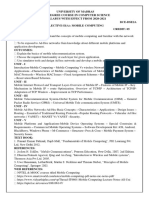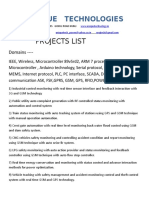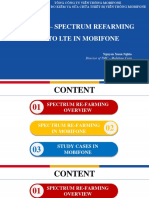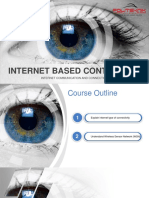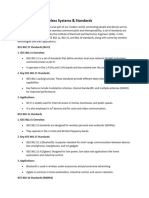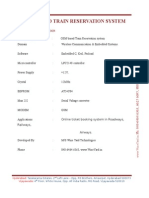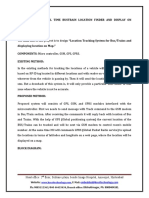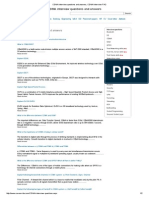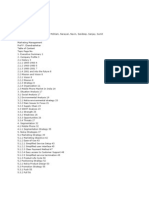0% found this document useful (0 votes)
48 views26 pagesChapter 2 Wireless
Mobile computing is a technology that enables data, voice, and video transmission through mobile devices without fixed connections, facilitating user mobility. It encompasses mobile communication infrastructure, hardware, and software, and is characterized by user mobility, device portability, and network mobility. While it offers advantages like increased productivity and seamless communication, it also presents challenges such as security concerns and power consumption.
Uploaded by
kirubelsintayehu96Copyright
© © All Rights Reserved
We take content rights seriously. If you suspect this is your content, claim it here.
Available Formats
Download as PDF, TXT or read online on Scribd
0% found this document useful (0 votes)
48 views26 pagesChapter 2 Wireless
Mobile computing is a technology that enables data, voice, and video transmission through mobile devices without fixed connections, facilitating user mobility. It encompasses mobile communication infrastructure, hardware, and software, and is characterized by user mobility, device portability, and network mobility. While it offers advantages like increased productivity and seamless communication, it also presents challenges such as security concerns and power consumption.
Uploaded by
kirubelsintayehu96Copyright
© © All Rights Reserved
We take content rights seriously. If you suspect this is your content, claim it here.
Available Formats
Download as PDF, TXT or read online on Scribd
/ 26







